-
Better monitoring of nuclear power plants, nuclear proliferation
The United Kingdom is investing nearly £10 million (about $12.7 million) in a joint project with the United States to harness existing particle physics research techniques to remotely monitor nuclear reactors. Expected to be operational in 2024, the Advanced Instrumentation Testbed (AIT) project’s 6,500-ton detector will measure the harmless subatomic particles called antineutrinos that are emitted by an existing nuclear power plant 25 kilometers, or about 15.5 miles, away.
-
-
Britain’s MI6 chief visited Israel to discuss Iran’s nuclear threat

The chief of Britain’s MI6 intelligence service recently visited Israel to discuss the threat posed by Iran’s nuclear program. Israeli intelligence believes that Iran is “making preparations” to develop nuclear weapons without blatantly violating the 2015 deal. However, the Islamic Republic has not yet made the political decision to break out, according to the Israeli assessment.
-
-
Deradicalization and countering violent extremism
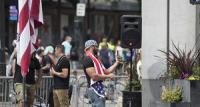
Since the early 2000s, more than fifty countries have developed initiatives to counter violent extremism (CVE). Despite this, there still remains a lack of strong evidence on which interventions are effective. Researchers have reviewed the literature on CVE programs to give examples of what good CVE practice should look like.
-
-
Doctor-affiliated PACs fund candidates opposing gun safety policies
Researchers found that physician-affiliated political action committees provided more financial support to candidates who opposed increased background checks, contrary to many societies’ recommendations for evidence-based policies to reduce firearm injuries.
-
-
Violent video games not associated with adolescent aggression: Study
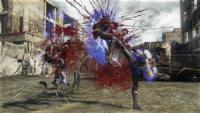
Researchers have found no relationship between aggressive behavior in teenagers and the amount of time spent playing violent video games. “The idea that violent video games drive real-world aggression is a popular one, but it hasn’t tested very well over time,” says lead researcher Professor Andrew Przybylski, Director of Research at the Oxford Internet Institute. “Despite interest in the topic by parents and policy-makers, the research has not demonstrated that there is cause for concern.”
-
-
L.A. showcases quake alert system
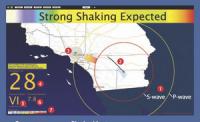
California is earthquake country, and residents of Los Angeles can now get some critical warning, when conditions are right, after a quake has started and seismic waves are heading their way. The long-delayed system, called ShakeAlertLA, is the first of its kind in the United States.
-
-
Israel fighting Iran’s efforts to upgrade Hezbollah’s rockets
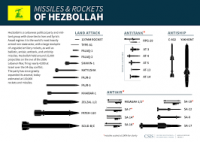
Israel has been countering Iranian efforts to use suitcases to smuggle GPS components into Syria to upgrade Hezbollah’s rocket arsenal. In 2017, once it appeared that Syrian dictator Bashar al-Assad would survive the civil war that was tearing his country apart, “Iran embarked on a grandiose plan for increasing its influence in the shattered country,” says an expert. Iran’s goal was to “build a force of up to 100,000 Shiite fighters from Pakistan, Afghanistan and Iraq. They built intelligence bases and an air force base within each Syrian airbase. And they brought civilians in order to indoctrinate them,” said Israel Defense Force’s former chief of staff, Gen. Gadi Eisenkot.
-
-
What mass shootings do to those not shot: Social consequences of mass gun violence
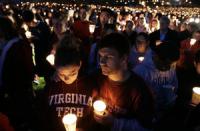
Mass shootings seem to have become a sad new normal in the American life. They happen too often, and in very unexpected places. Concerts, movie theaters, places of worship, workplaces, schools, bars and restaurants are no longer secure from gun violence. Still, hardly any attention is paid to the stress of such events beyond the immediate victims — on the rest of society. That includes those who survived the shooting; those who were in the vicinity, including the first responders; those who lost someone in the shooting; and those who hear about it via the media.
-
-
Reducing Illinois gun violence
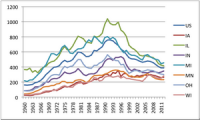
Illinois could reduce the number of people killed each year by gun violence by implementing ten policies supported by available research, according to a new report. The Johns Hopkins report identifies weaknesses or gaps in current Illinois law and offers recommendations to reduce gun violence.
-
-
After Aurora shooting, lawmakers revive proposal to disarm unlawful gun owners
Illinois revokes thousands of gun licenses every year. But it’s rare for law enforcement to remove firearms from owners barred from having them. Legislators in Illinois are scrambling to address a gap in state law that many have blamed for allowing the gunman who killed five people in Aurora last week to keep his handgun even after he was banned from possessing firearms.
-
-
700,000 submunitions demilitarized by Sandia-designed robotics system

More than 700,000 Multiple Launch Rocket System submunitions have been demilitarized since the Army started using an automated nine-robot system conceptualized, built and programmed by Sandia Lab engineers. The automated system was built for the Army’s demilitarization program that aims to dismantle obsolete ammunition and missiles.
-
-
Marine organisms as detectors of enemy undersea activity
Goliath grouper, black sea bass, and snapping shrimp, along with bioluminescent plankton and other microorganisms, are set to be the unlikely additions to protecting U.S. assets. Researchers are developing new types of sensor systems that detect and record the behaviors of these marine organisms and interpret them to identify, characterize, and report on the presence of manned and unmanned underwater vehicles operating in strategic waters. The incorporation of biological signals will extend the range, lifetime, and performance of undersea surveillance technologies in strategic waters.
-
-
U.S. Coast Guard officer to be charged with mass terrorism plot
Christopher Paul Hasson, a U.S. Coast Guard officer will appear in court today (Thursday), charged with plotting a massive, 2-prong attack modeled after the 2011 Anders Behring Breivik’s terrorist attack in Norway. Breivik killed eight people in Oslo as a diversion, before killing 69 teenagers in a summer camp organized by the Norwegian Social Democratic Party. Hasson compiled a hit list of liberal politicians, Supreme Court judges, and journalists – but his violent plans extended to trying to “establish a white homeland,” and using biological weapons to “kill almost every last person on Earth.”
-
-
U.S. hate groups hit record number last year amid increased violence
American hate groups had a bumper year in 2018 as a surge in black and white nationalist groups lifted their number to a new record high, the Southern Poverty Law Center said in a report issued Wednesday. The increase was driven by growth in both black and white nationalist groups, the SPLC said. The number of white nationalist groups jumped from 100 to 148, while the number of black nationalist groups — typically anti-Semitic, anti-LGBTQ and anti-white — rose from 233 to 264. Some conservative groups have accused the SPLC of unfairly labeling them as “hate groups,” and last month, the Center for Immigration Studies sued the SPLC for “falsely designating” it as a hate group in 2016, saying the SPLC has produced no evidence that the group maligns immigrants as a class.
-
-
Disguises are surprisingly effective
Superficial but deliberate changes in someone’s facial appearance – such as a new hairstyle or complexion - are surprisingly effective in identity deception, new research suggests.
-
More headlines
The long view
AI-Controlled Fighter Jets May Be Closer Than We Think — and Would Change the Face of Warfare
Could we be on the verge of an era where fighter jets take flight without pilots – and are controlled by artificial intelligence (AI)? US R Adm Michael Donnelly recently said that an upcoming combat jet could be the navy’s last one with a pilot in the cockpit.
What We’ve Learned from Survivors of the Atomic Bombs
Q&A with Dr. Preetha Rajaraman, New Vice Chair for the Radiation Effects Research Foundation in Hiroshima and Nagasaki, Japan.
Need for National Information Clearinghouse for Cybercrime Data, Categorization of Cybercrimes: Report
There is an acute need for the U.S. to address its lack of overall governance and coordination of cybercrime statistics. A new report recommends that relevant federal agencies create or designate a national information clearinghouse to draw information from multiple sources of cybercrime data and establish connections to assist in criminal investigations.
Autonomous Weapon Systems: No Human-in-the-Loop Required, and Other Myths Dispelled
“The United States has a strong policy on autonomy in weapon systems that simultaneously enables their development and deployment and ensures they could be used in an effective manner, meaning the systems work as intended, with the same minimal risk of accidents or errors that all weapon systems have,” Michael Horowitz writes.
Twenty-One Things That Are True in Los Angeles
To understand the dangers inherent in deploying the California National Guard – over the strenuous objections of the California governor – and active-duty Marines to deal with anti-ICE protesters, we should remind ourselves of a few elementary truths, writes Benjamin Wittes. Among these truths: “Not all lawful exercises of authority are wise, prudent, or smart”; “Not all crimes require a federal response”; “Avoiding tragic and unnecessary confrontations is generally desirable”; and “It is thus unwise, imprudent, and stupid to take actions for performative reasons that one might reasonably anticipate would increase the risks of such confrontations.”
Luigi Mangione and the Making of a ‘Terrorist’
Discretion is crucial to the American tradition of criminal law, Jacob Ware and Ania Zolyniak write, noting that “lawmakers enact broader statutes to empower prosecutors to pursue justice while entrusting that they will stay within the confines of their authority and screen out the inevitable “absurd” cases that may arise.” Discretion is also vital to maintaining the legitimacy of the legal system. In the prosecution’s case against Luigi Mangione, they charge, “That discretion was abused.”
